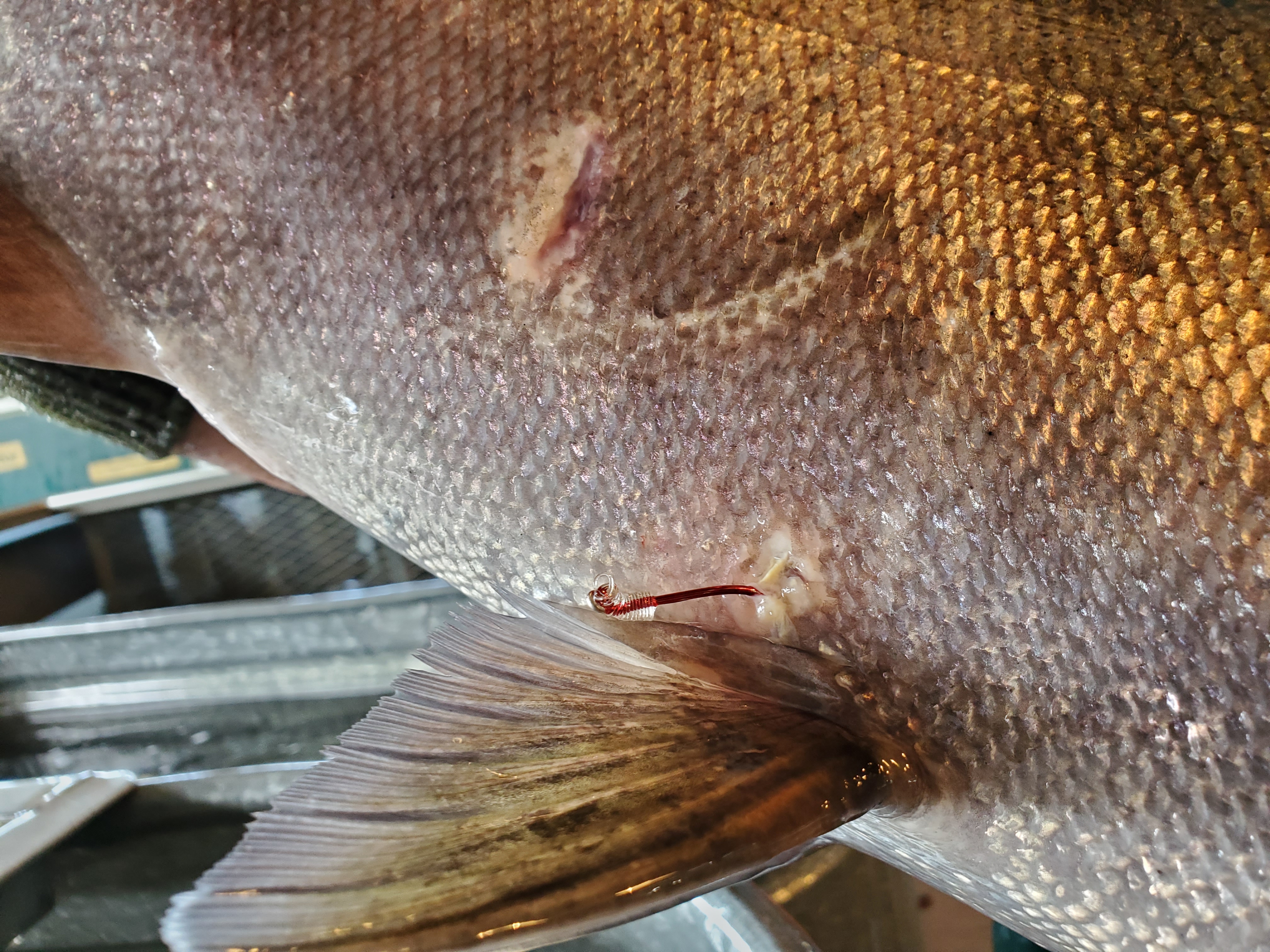ODFW/OSP Stop Poaching Campaign (Photo) - 06/09/23
NEWS RELEASE
Oregon Department of Fish and Wildlife, Stop Poaching campaign
Contact: Media: osppio@osp.oregon.gov
To report tips: TIP Line: 800-452-7888 or *OSP (*677) from mobile
Date: 6/9/23
Subject: Torn fins, embedded hooks mark spawning salmon and steelhead returning to Oregon hatcheries.
SALEM, Ore. — OSP F&W Troopers discovered fish with embedded hooks, sliced fins, circular scabs, and other evidence of illegal tactics, while assisting ODFW hatchery staff during the spring salmon spawning season.
Snagging occurs when a person hooks, or attempts to hook, a fish anywhere on its body other than inside the mouth. Although snagging is an unlawful practice with steep consequences, many people still engage in this unethical behavior, according to OSP F&W Trooper Cameron Jamison.
“Indicators that a person may be attempting to snag fish include quickly and repeatedly ripping large lengths of line through the water, repeated yanking of the fishing rod from water lever to over the shoulders or head and failing to release fish which have been hooked anywhere on their fins or body,” Trooper Cameron said.
Evidence of snagging and other injuries becomes apparent during annual collection processes, when hatchery workers collect and sort salmon and steelhead for spawning.
During the collection process, hatchery staff, with assistance from OSP F&W Troopers, check for tags that indicate when and where each fish was released as a smolt, along with other tracking information. The data from these collections is used to determine the health of the fish populations and to assist in determining future rules and regulations.
Salmon and Steelhead then go into holding ponds until the hatchery accumulates the number of fish necessary to repopulate that hatchery and river system. When hatchery workers reach a target number of salmon and steelhead, they contain the fish in holding ponds for spawning.
Steelhead in good condition after spawning are released back into the lower sections of the same river in hopes that they will head back out to the ocean and have another opportunity to return to the hatchery next year to spawn again. Salmon and steelhead at the end of their lifecycles are placed in streams to decompose as part of the stream enrichment program.
By the time salmon and steelhead return to the hatchery they’ve typically reached the end of their lifecycle. Seventy percent of salmon and steelhead harvested In Oregon originate from a hatchery, and ninety five percent of the salmon and steelhead harvested in the Willamette River originate from a hatchery. In 2022, hatcheries estimated returns of about 142,000 salmon and 27,000 steelhead.
The Stop Poaching Campaign educates the public on how to recognize and report poaching. This campaign is a collaboration among state agencies, sportsmen and other conservationists, landowners, and recreationists to engage the public in combatting Oregon’s poaching problem. Our goal is to: Incentivize reporting on wildlife crimes through the TIP Line; Strengthen enforcement by increasing the number of OSP Fish and Wildlife Troopers; and Support prosecution in becoming an effective deterrent. The campaign helps to protect and enhance Oregon’s fish and wildlife and their habitat for the enjoyment of present and future generations. Contact campaign coordinator Yvonne Shaw for more information. Yvonne.L.Shaw@odfw.oregon.gov.
If you observe behavior that you believe to be snagging, please contact Oregon State Police Fish & Wildlife at *OSP (*677) or the Turn-In-Poachers (TIP) Line at: (800) 452-7888.”
# # #

